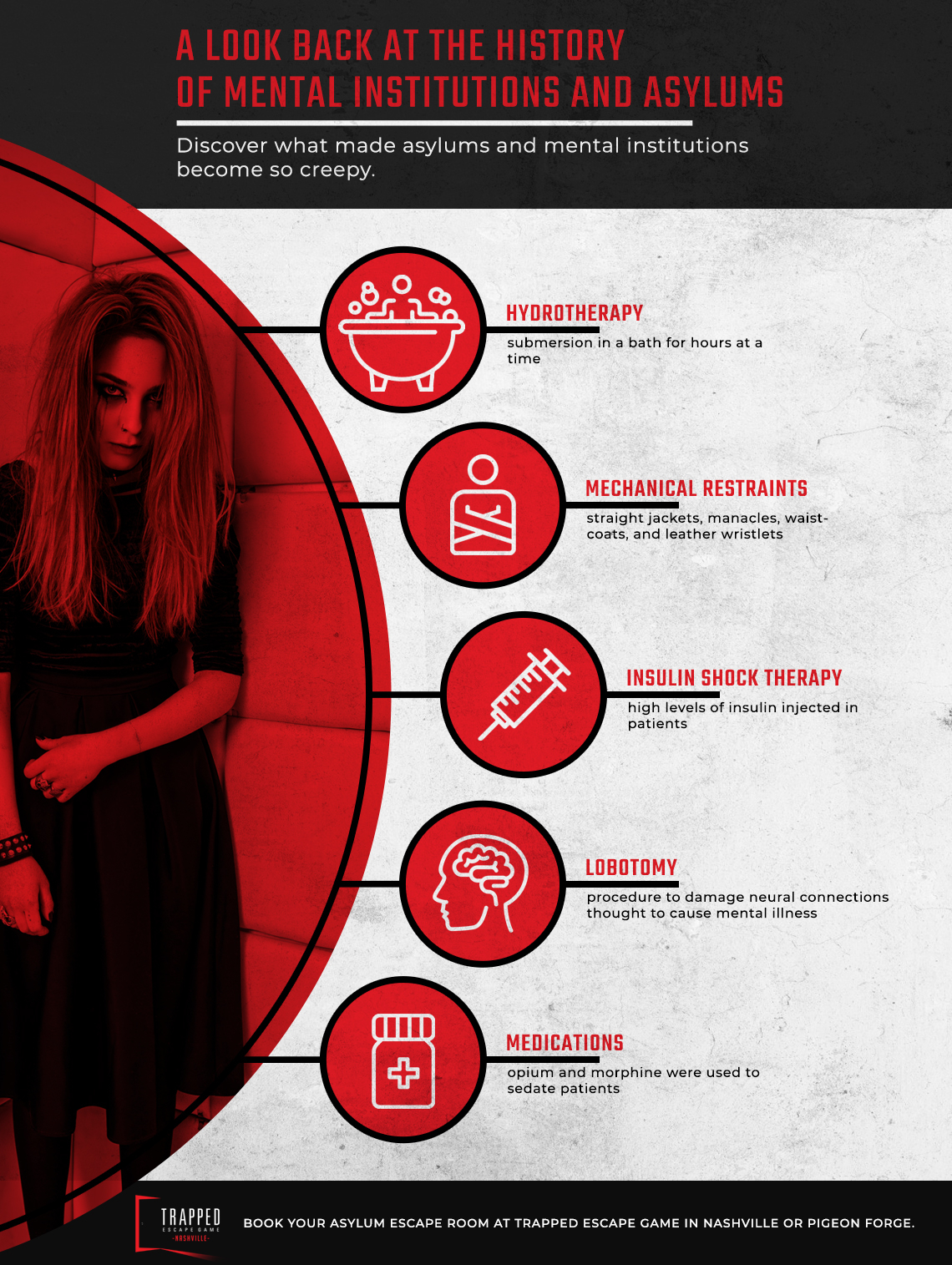Asylums are often the focal point of many haunted houses, horror movies, and terrifying television shows. With asylums and mental institutions as a whole being a thing of the past, it’s this horrific representation that most people associate with asylums.
Though mental hospitals are generally talked about in regards to horror and scary settings, this was not what these institutes were intended to be. In today’s blog, the team at Trapped Escape Game is going to provide you with a little bit of insight into the history of asylums and how we got to where we are today.
The Very Beginning
Asylums and mental health wards date back to the late 1700s. Intended to be a safe haven for those who were vulnerable to the most common parts of society and culture. At this point in time, these buildings were called “lunatic asylums” and were later renamed “mental hospitals”. What was once intended to be a space of refuge took a quick turn as these buildings were later considered prison-like. The doctors would complete dangerous and harmful procedures on patients as well as over-medicate with cocktails of drugs.
Prior to physical asylums existing, care for these individuals be taken on by the family or by the church. For those who had neither a family nor a church to take them in, homelessness was the only answer. To avoid this from being the case, asylums and mental institutions started popping up to provide these people with a place to stay and receive the care they need. With that being said, let’s talk a little bit about the medical expertise that was housed within these institutions.
Medical Expertise and Professionals
Aside from providing the mentally ill with a place to stay, mental institutions were a place for individuals to receive the care that they needed. Many of the treatments completed were dangerous and often left the patients in a worse state. These treatments ranged from anything from isolation for days at a time to lobotomies and insulin-induced coma therapy. While these treatments were perceived to be something that would help the mentally ill, most of the patients receiving these treatments were left injured, unstable, and at times could lead to fatality.
It’s often the medical aspect of asylums and mental institutes that create that sense of fear and horror. The most common treatments that took place in these institutes are things we wouldn’t dare consider now and can send shivers up your spine just learning about them.
These horrific treatments were utilized across the county at various asylums. The most common procedure was a lobotomy. Here’s a little bit more about what this procedure entailed and what it was believed to do.
Lobotomy
A lobotomy is a form of psychosurgery that was supposed to treat any mental disorder that was due to the brain’s prefrontal cortex. This procedure would sever one’s connection to the brain’s prefrontal lobe. Some of the first lobotomies were done by cutting a small hole into the skull and injecting the brain with ethanol. This would destroy any of the fibers that were connected to the frontal lobe, but also to various other parts of the brain.
There was a small percentage of individuals that did benefit from this procedure. For many, however, a lobotomy would affect their inhibitions, empathy, initiative, and ability to function on their own. Lobotomies would also have a huge effect on the personality of the patient.
Given how many negative things this procedure brought on, it’s not surprising to hear that lobotomies are very rarely performed today.
Deinstitutionalization of Asylums
The deinstitutionalization of asylums started in the 1960s with the goal to move the treatment of the mentally ill from these hospitals and into communities. The three primary reasons that this was being done were because of Medicare and Medicaid funding going towards mental health care facilities, the development of psychiatric drugs that could help with mental illness, and the unwavering understanding that it was time to care for the mentally ill rather than lock them up. Thus began the deinstitutionalization of asylums.
Budgets were cut, patients were released, and hospitals began to close. Overpopulation in asylums was a problem before the deinstitutionalization of asylums began, but it became even worse as the process continued. Now, there was no means for providing long-term care for patients, the ability to afford medication or procedures, or the means to staff adequately for the number of patients that were within these hospitals.
The condition of mental institutes during the process of deinstitutionalization affected the quality of care that mental hospitals were able to provide, cleanliness, medication, and quality of medical professionals. The buildings were run down, the patients were out of control, and the perception of insanity was out there for the public to see. It’s this transitional phase for mental institutes that most will envision when thinking of mental hospitals.
Around the 1970s and 1980s, a majority of mental institutes had closed their doors completely. Those that were still open served as short-term stay facilities only. Eventually, these facilities were all shut down and all patients were released. Unfortunately, many of these patients were released with no place to go or family to call on, leaving them on the streets.
Visit Trapped Escape Game
Now that you have a little background knowledge of why asylums were started and where the big turn in quality of care took place, these spaces might seem less creepy. On the other hand, knowing the history of the procedures that they completed and the outrageous number of mentally ill that were locked up in this building might make asylums significantly scarier. If you are intrigued by the setting of mental institutes and the adrenaline that kicks in when you need to make it out of them alive, we’ve got the right activity for you.
At Trapped Escape Game in Nashville, we offer fun and exhilarating group activities for you and your friends to enjoy. Our Asylum Escape Room is sure to both challenge and thrill you. Contact our office with any questions or to get a time set up for you and your group.

